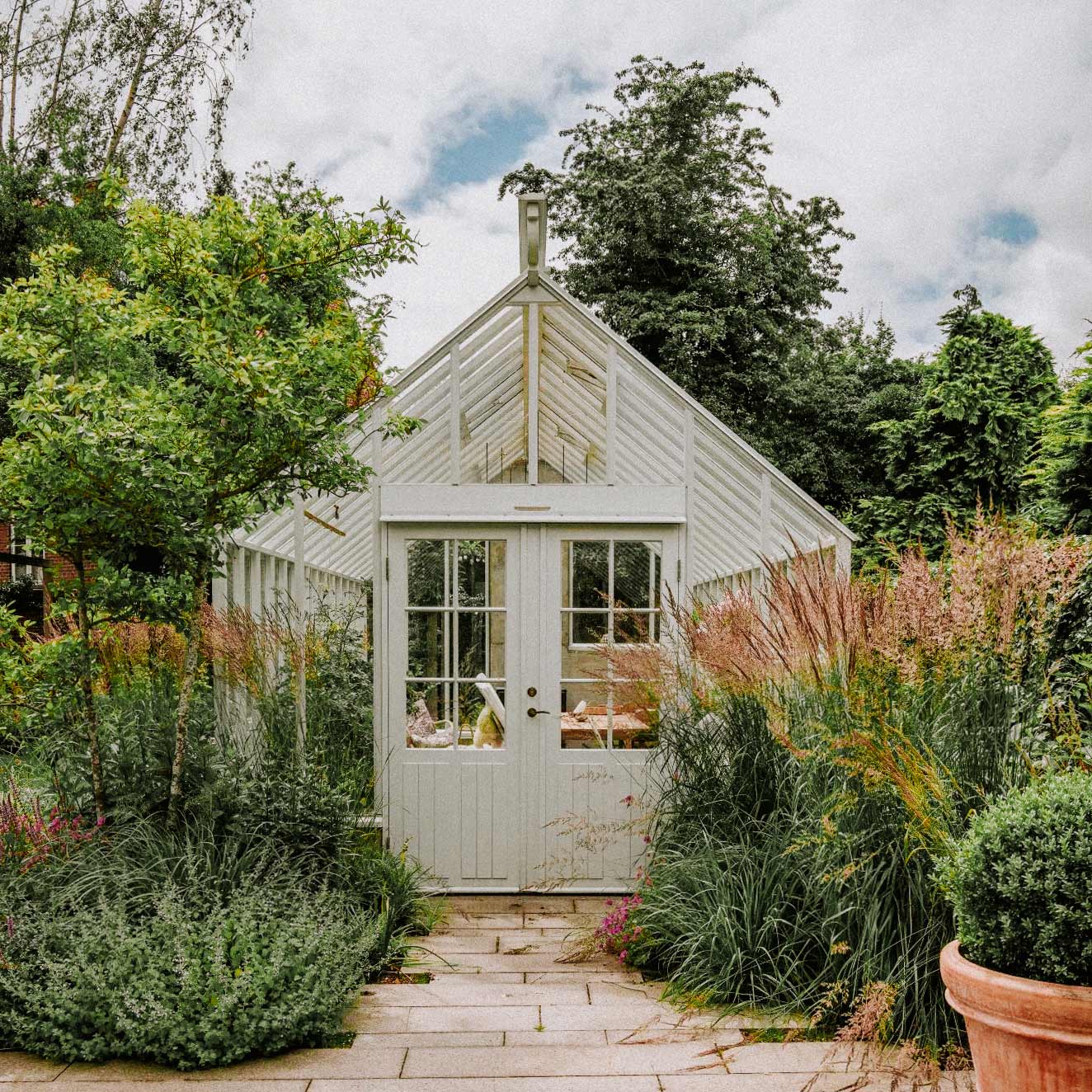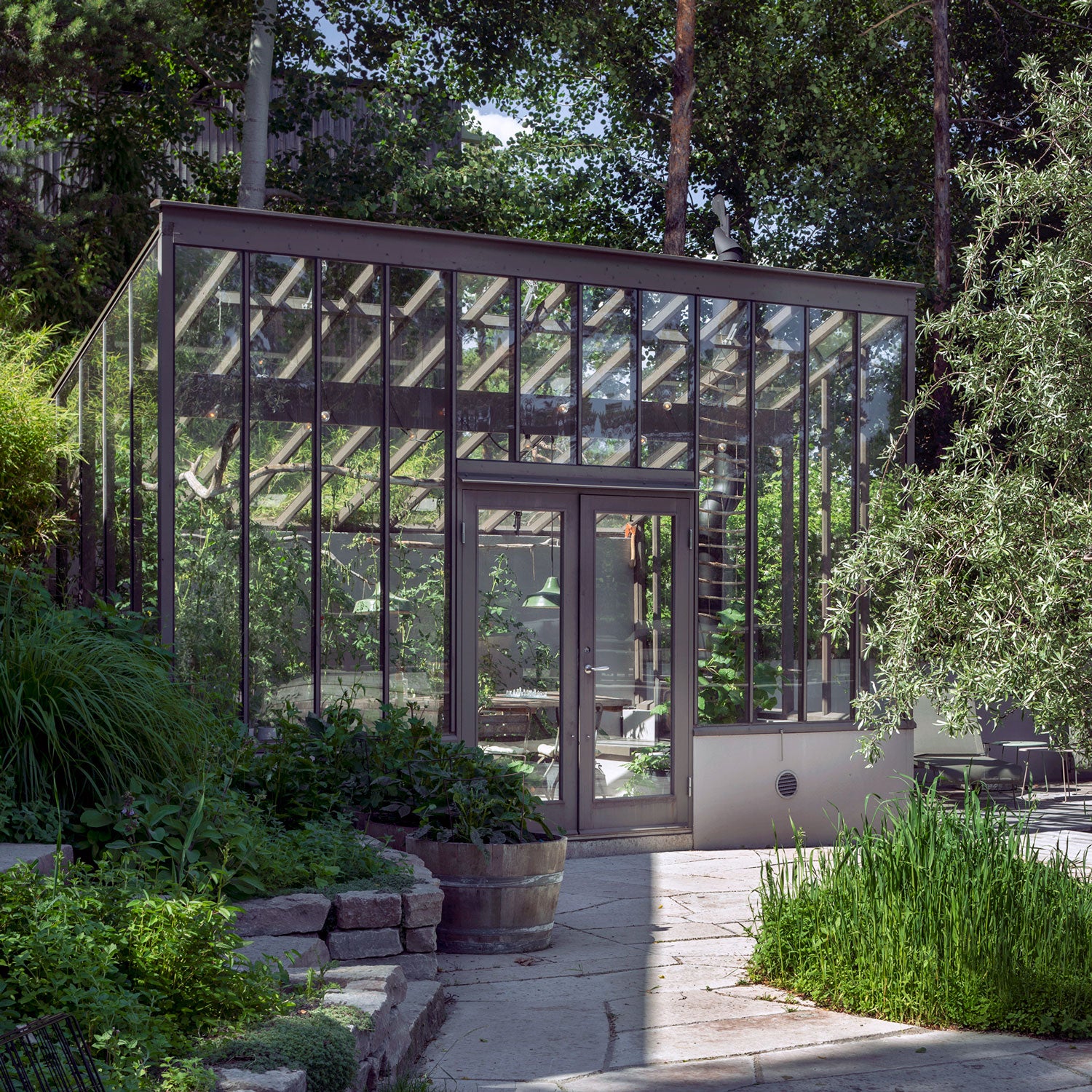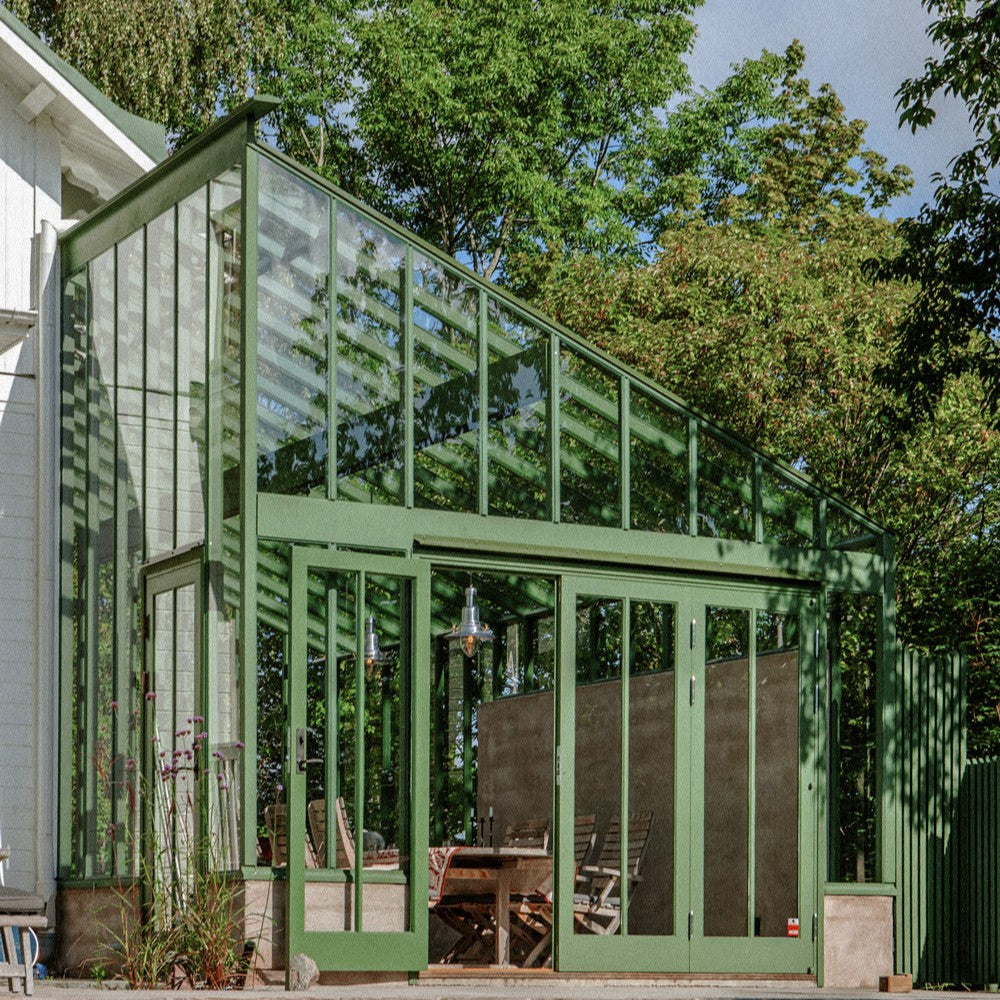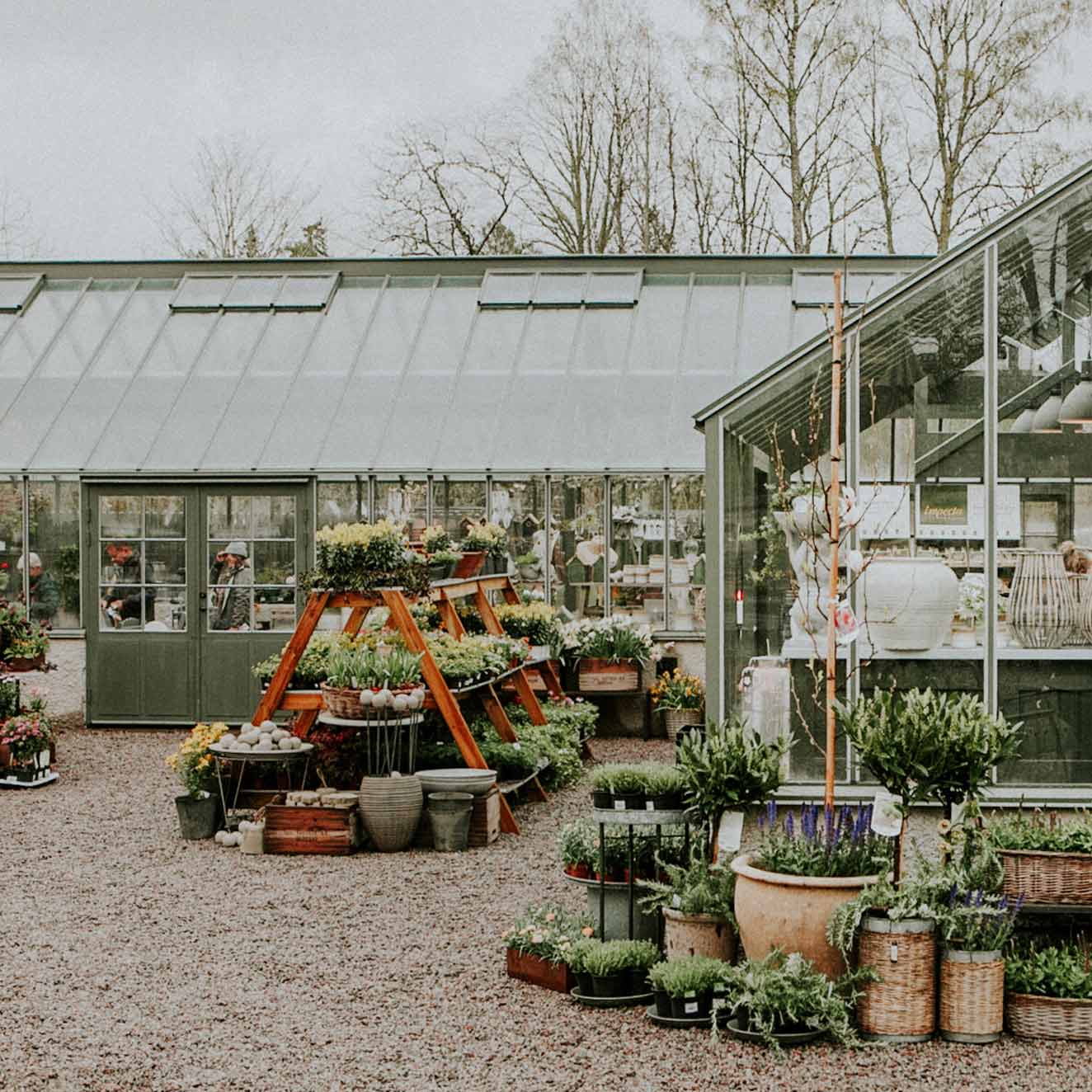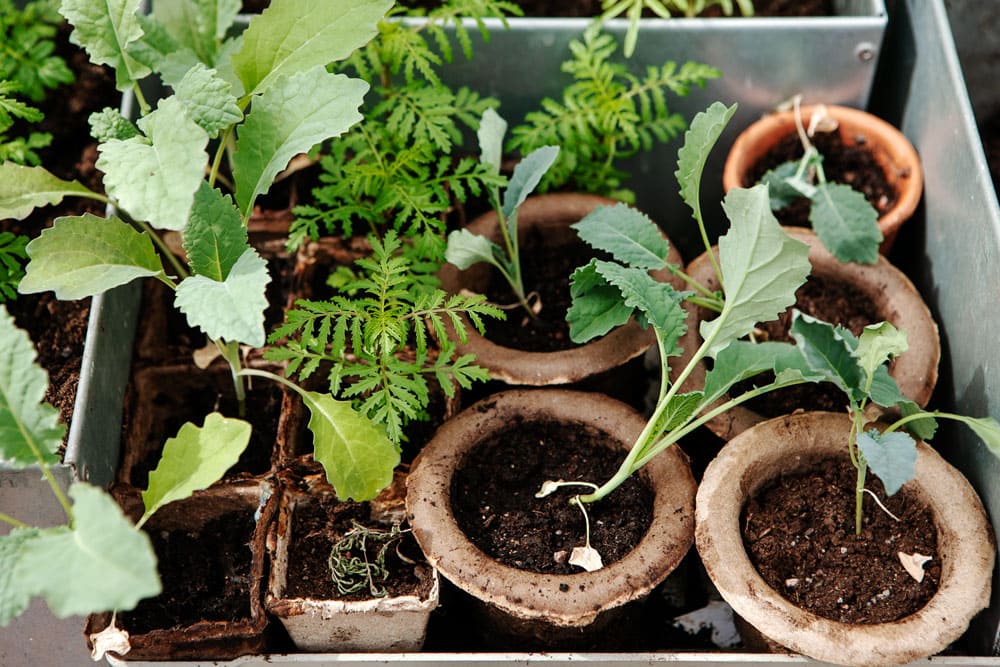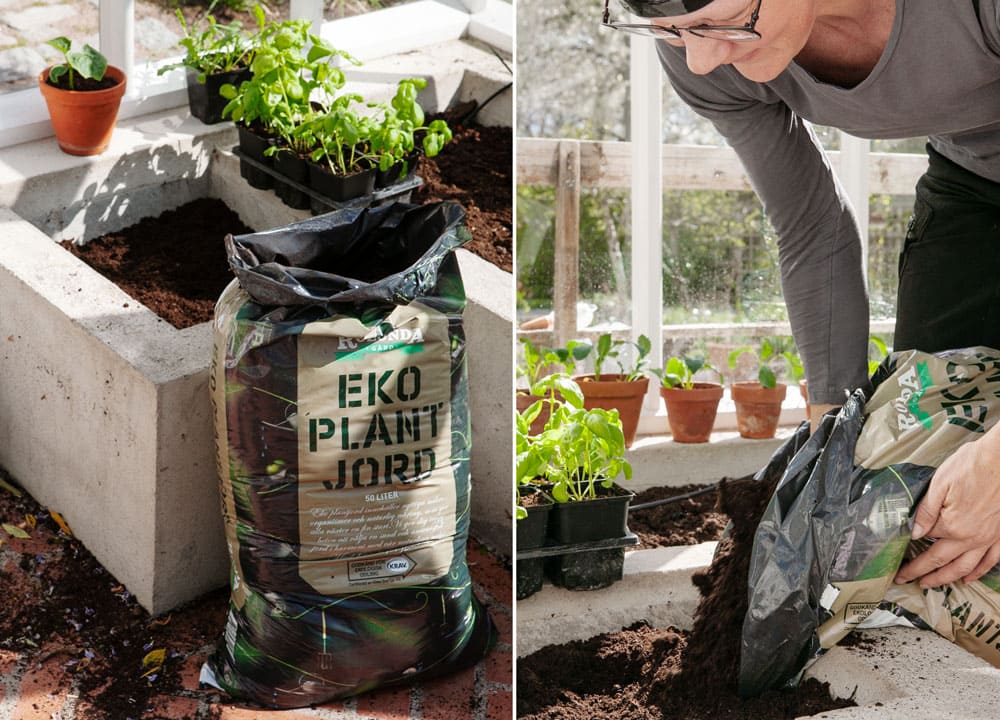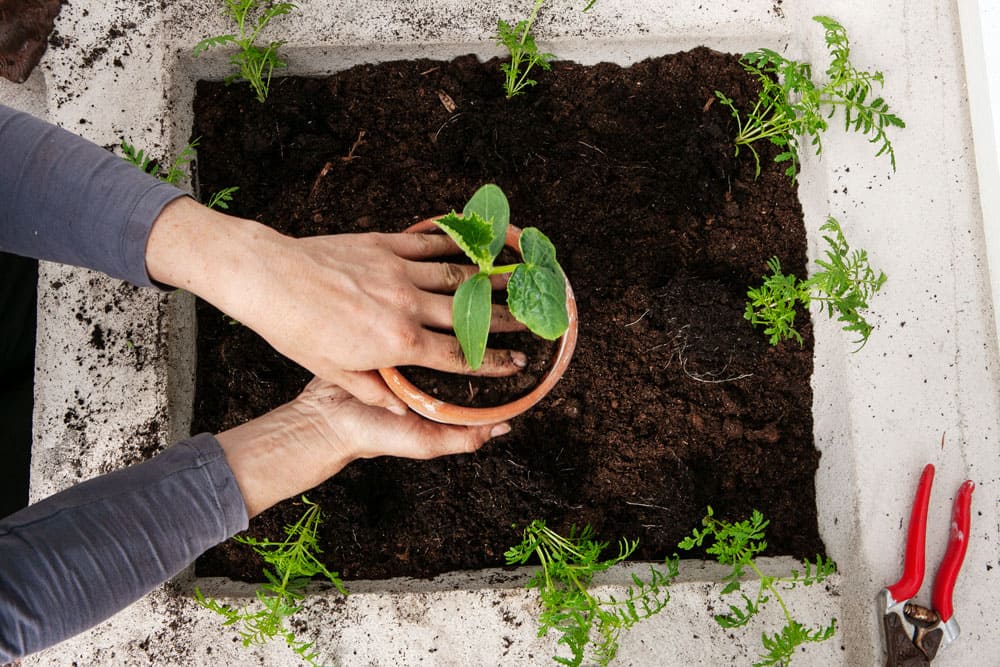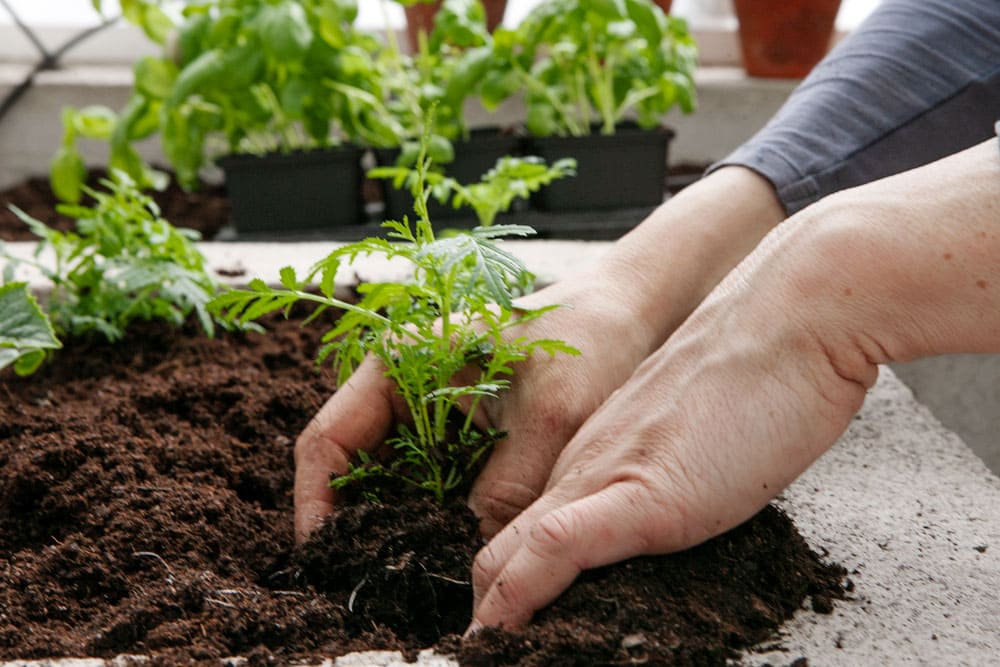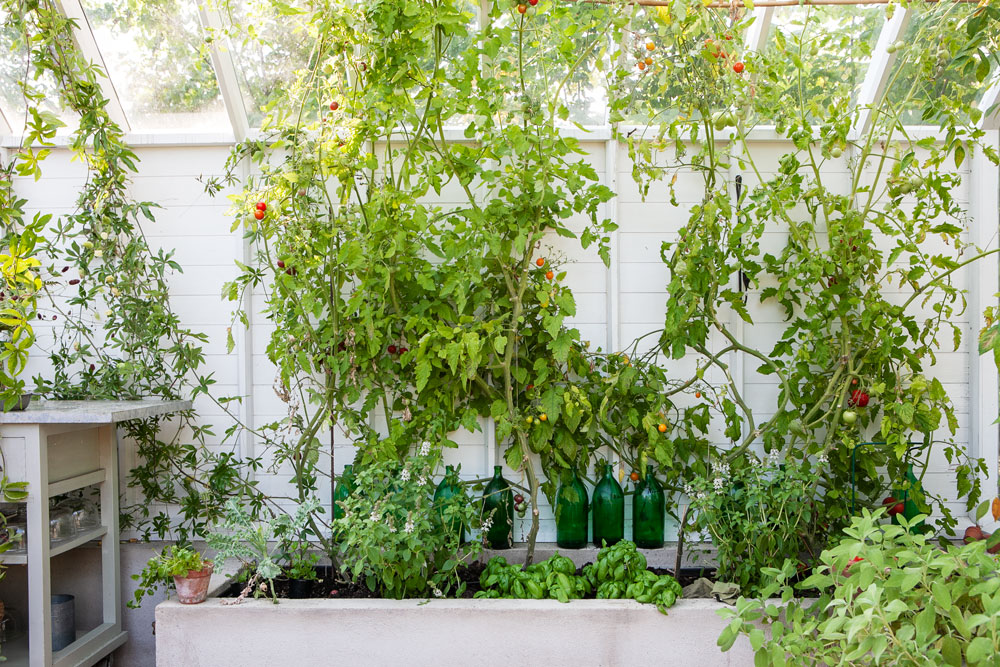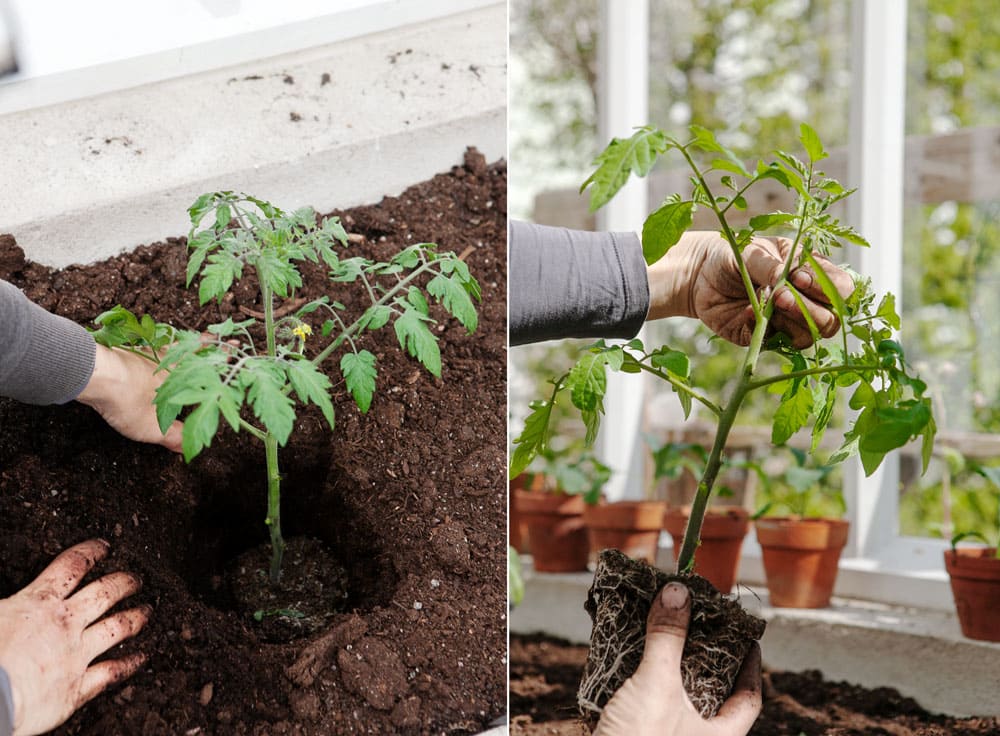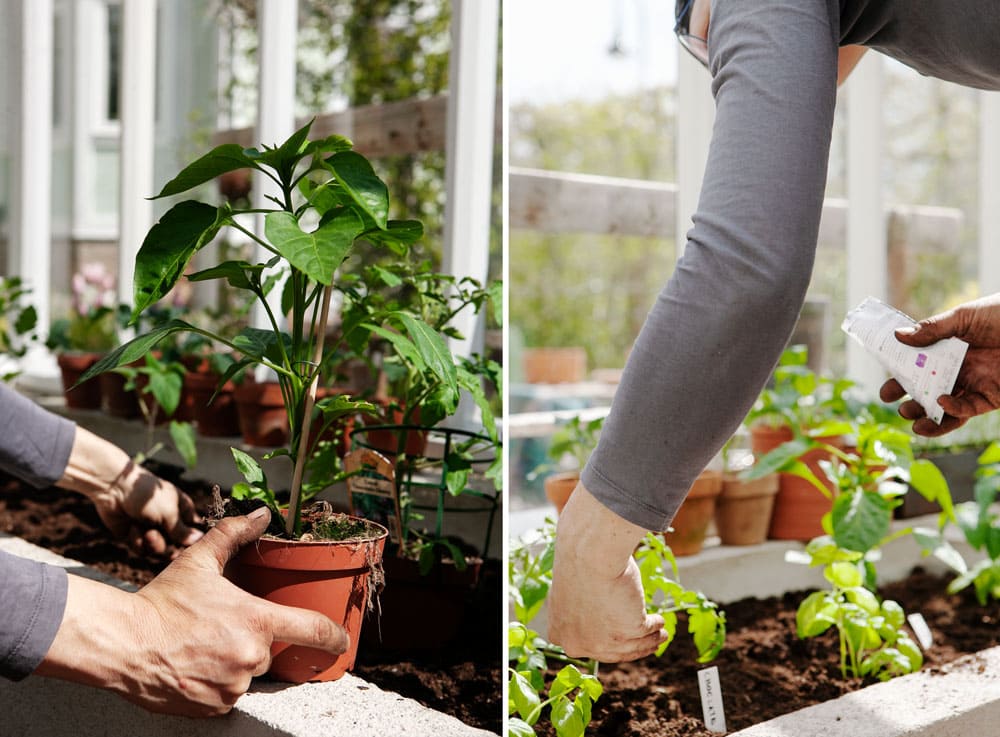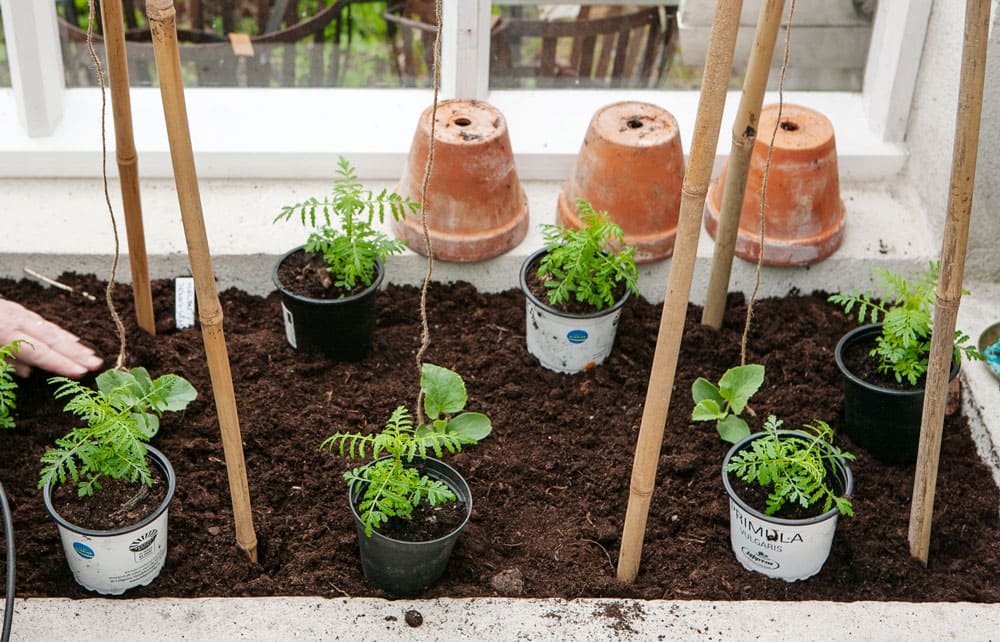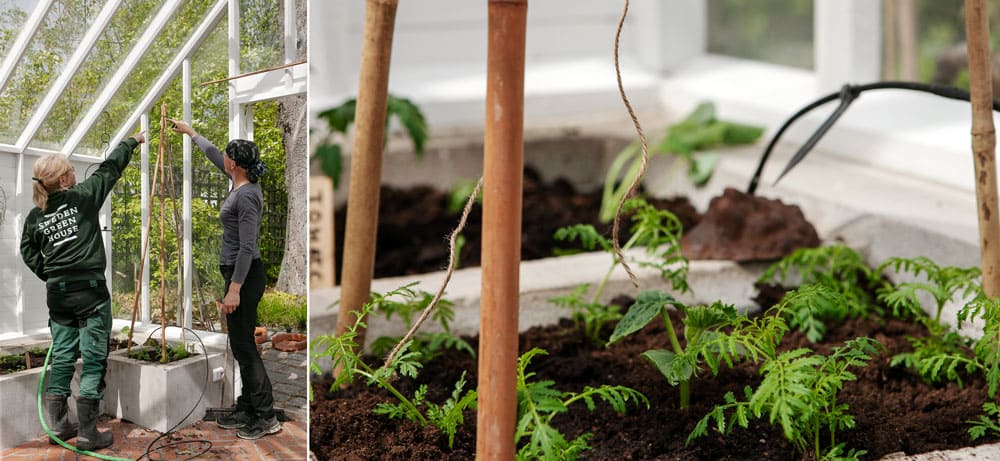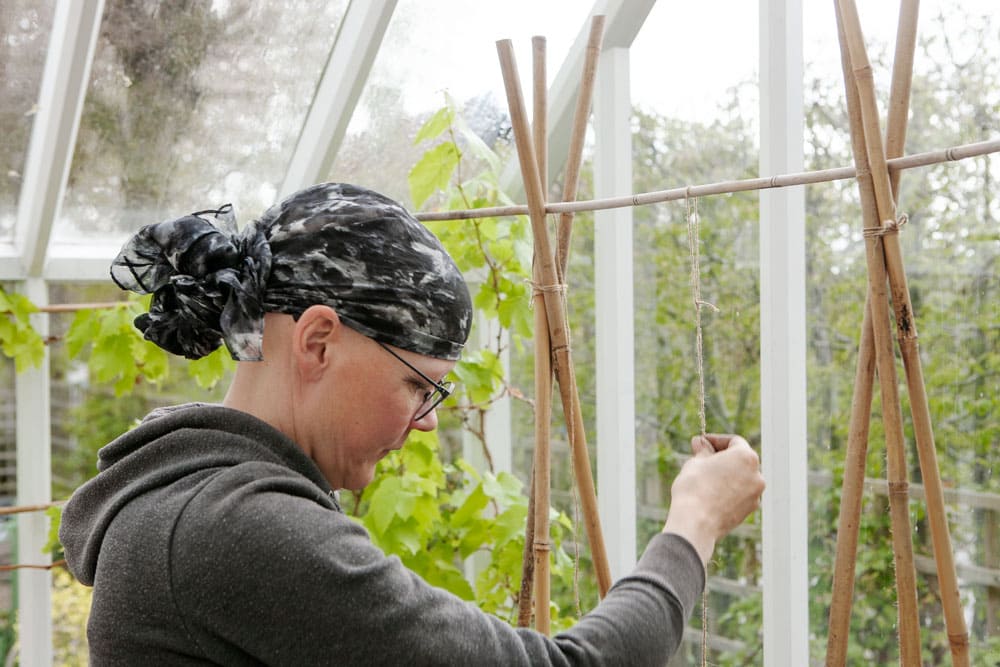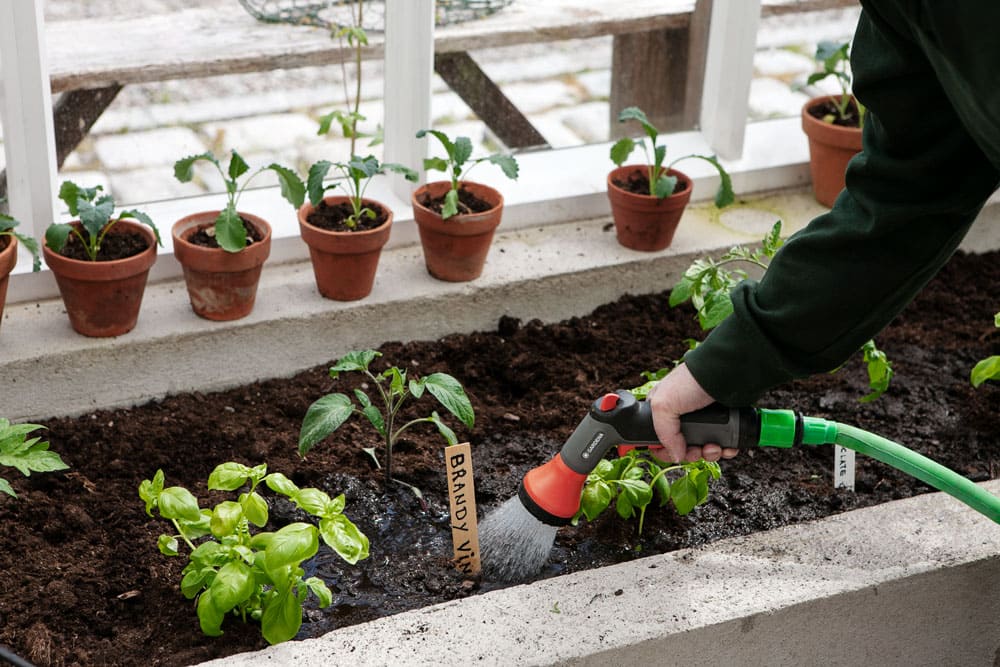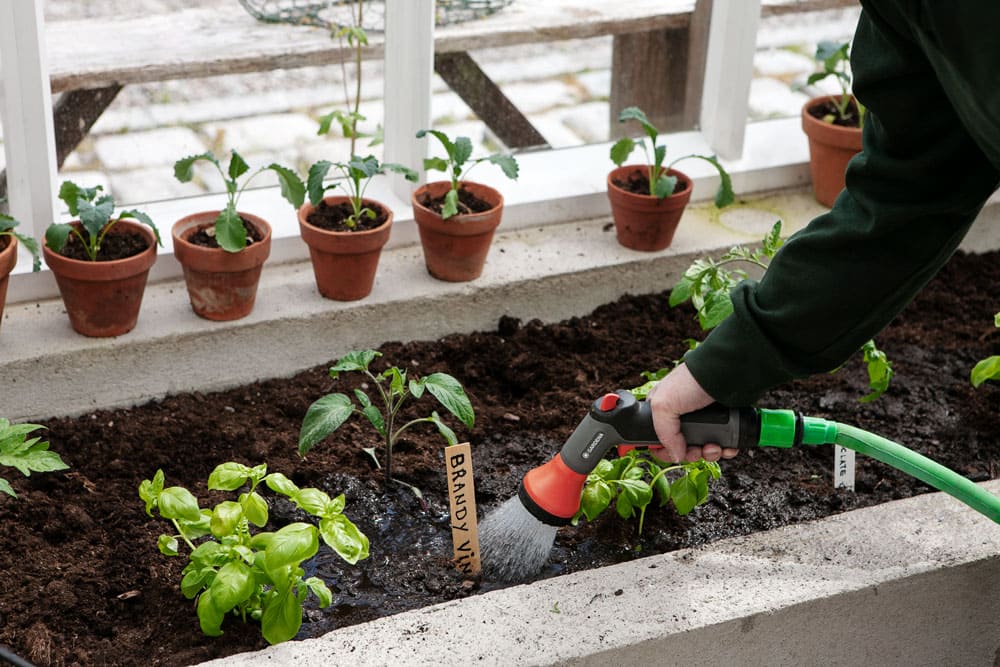
Succeeding with greenhouse cultivation
Earth
Once the growing beds are filled, it's time to start planting.
The plantings
The idea is that the cucumbers will grow in the small growing beds that Eva has in her greenhouse on either side of the entrance. The hope is that the plants will wind around the door and that the cucumbers will eventually hang beautifully around the entrance.
Cucumber plants can be delicate in the stems and root system, so be careful around the plant when you turn the pot upside down to get the soil out.
Lisa plants marigolds around the cucumbers. They will grow to about 30 cm tall, thus hiding the soil and cucumber plants below. Marigolds are a beautiful annual plant with edible flowers and leaves, great for using as a decoration on top of salads and baked goods.
Eva has growing beds on both long sides of her greenhouse that fold out towards the double door, which is located on the short side. She also has beds on each side of the wood-burning stove, on the other short side. She has also built a wooden wall that provides privacy on one long side.
The growing beds are 60 cm wide, so in one we had cucumbers and marigolds and in the other we planted tomatoes and rocket lettuce. We also sowed both rocket and Thai basil between the plants.
The tomato plants will be winding up to the ceiling, much like the picture above. It is from a previous season. To get a beautiful bed and at the same time make maximum use of the soil surface, we are using the space under the tomato plants to grow various heat-loving vegetables. The planting together with the sowing will hopefully mean that Eva can harvest lettuce and basil over a long period as they become ready to harvest at different times.
When planting tomatoes, remember to plant them deep in the soil, so roots develop from the lower part of the stem as well and the plant gets a robust root system. It is also good to pinch them. Then you remove the shoots that grow in the leaf folds. That way you get a strong main stem, which makes the plant viable so that it can produce a lot of fruit.
In the growing beds on the opposite side, Lisa supplemented the tomatoes with chili. In addition, basil went into the soil along with the spicy marigolds that were planted at the back towards the windows. When the marigolds grow up, they will protect the other plants from too much sun. In addition, Lisa poked seeds of a red-leafed basil into the soil. You can never have too much basil.
Lisa planted melon plants in the soil beds placed on either side of the stove. Around these, even more marigolds were planted.
Then it was time to start thinking about tying.
Binding
Pyramids of bamboo poles will support the cucumber plant as it grows up to the ceiling. When it reaches that point, there is another bamboo pole above the double doors to take over. Lisa and Eva tied a string to the top of the pyramid. The plant can be quite heavy, so it is important to tie it properly and use a good string intended for tying.
The tomatoes will be tied up later. They may need to be a little more sturdy before the string is attached. They will also be supported by the string tied to a horizontal bamboo stick, which Eva usually hangs from simple hooks screwed into the rafters.
The melons were given double pyramids and a horizontal stick resting on the tops of the pyramids. From the stick, Lisa tied strings that the melon plant can wind up against. When the fruits start to grow, they can be placed in netting, fabric or a nylon stocking as extra support. The fruits will be heavy, but by placing them in a small hammock, you minimize the risk of the melon stem breaking.
Water
Now is the day to water the newly planted beds for the first time. On sunny days in the middle of summer, Eva gives the growing beds 10 liters of water per day. One tip is to feel with your finger a little bit into the soil. This is the best indication of how much water the growing beds need. Eva has a drip irrigation system installed that is controlled via an app on her phone.
Both tomatoes and cucumbers need a lot of water. If it is hot and sunny and they are also going to produce fruit, each plant needs 3-4 liters per day. Cucumbers want a little more.
If you hand water, to avoid leaf mold diseases on tomatoes and cucumbers, never water with cold water directly on either the stem or the leaves. When the nights are still cold, it is best to water early in the morning. This way the bed stays warm more easily at night.
Different plants are sensitive to temperature changes and water differently - the heat-loving basil really doesn't like to be chilled. So avoid watering the leaves.
Fertilize once a week with an all-purpose fertilizer. You can buy something that is mixed with water in the watering can, but of course, you can also make your own nettle water, comfrey water, or other nutrient water made from green mass.
Now all you have to do is wait, water, pick, fertilize, monitor - and hope for the best!
